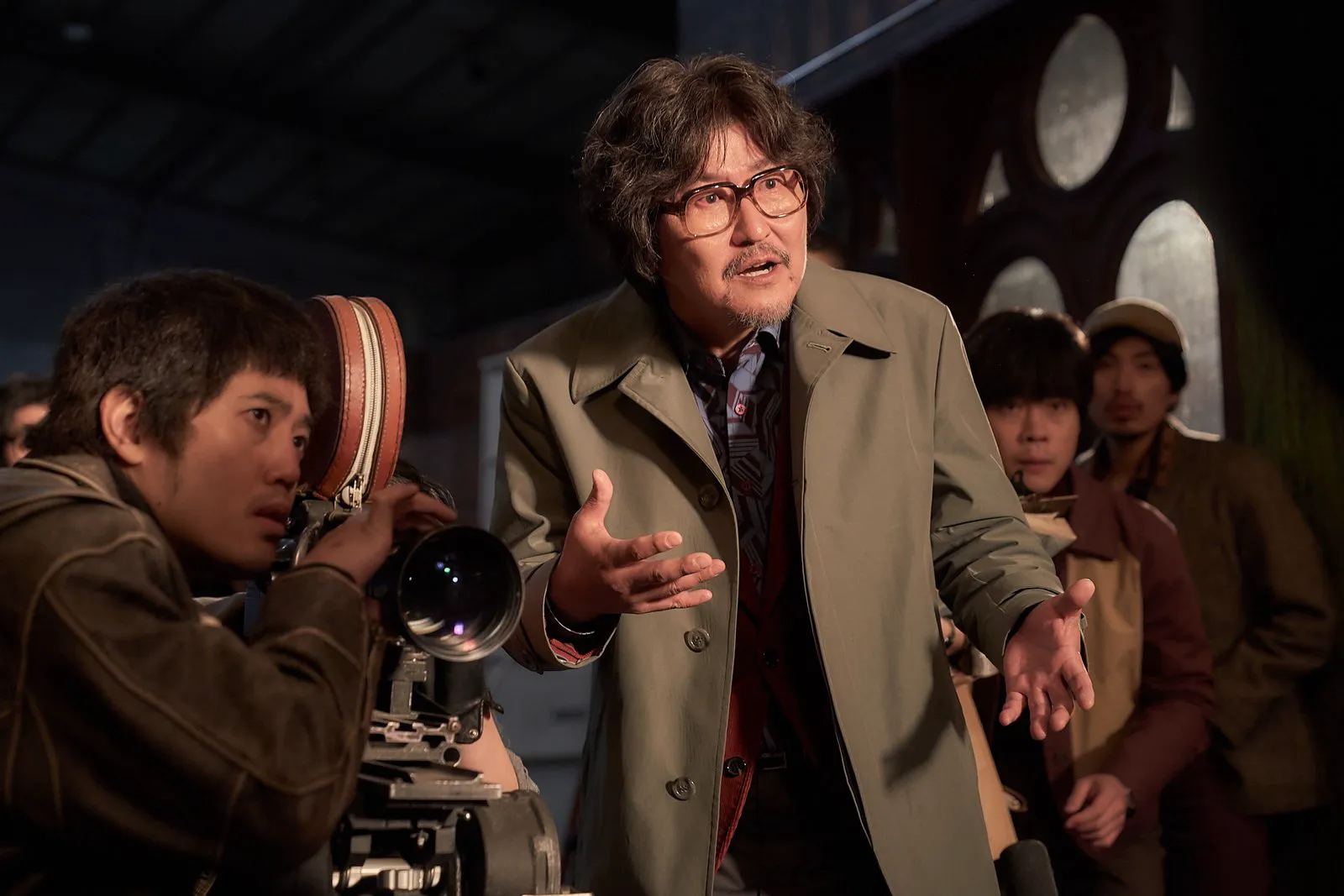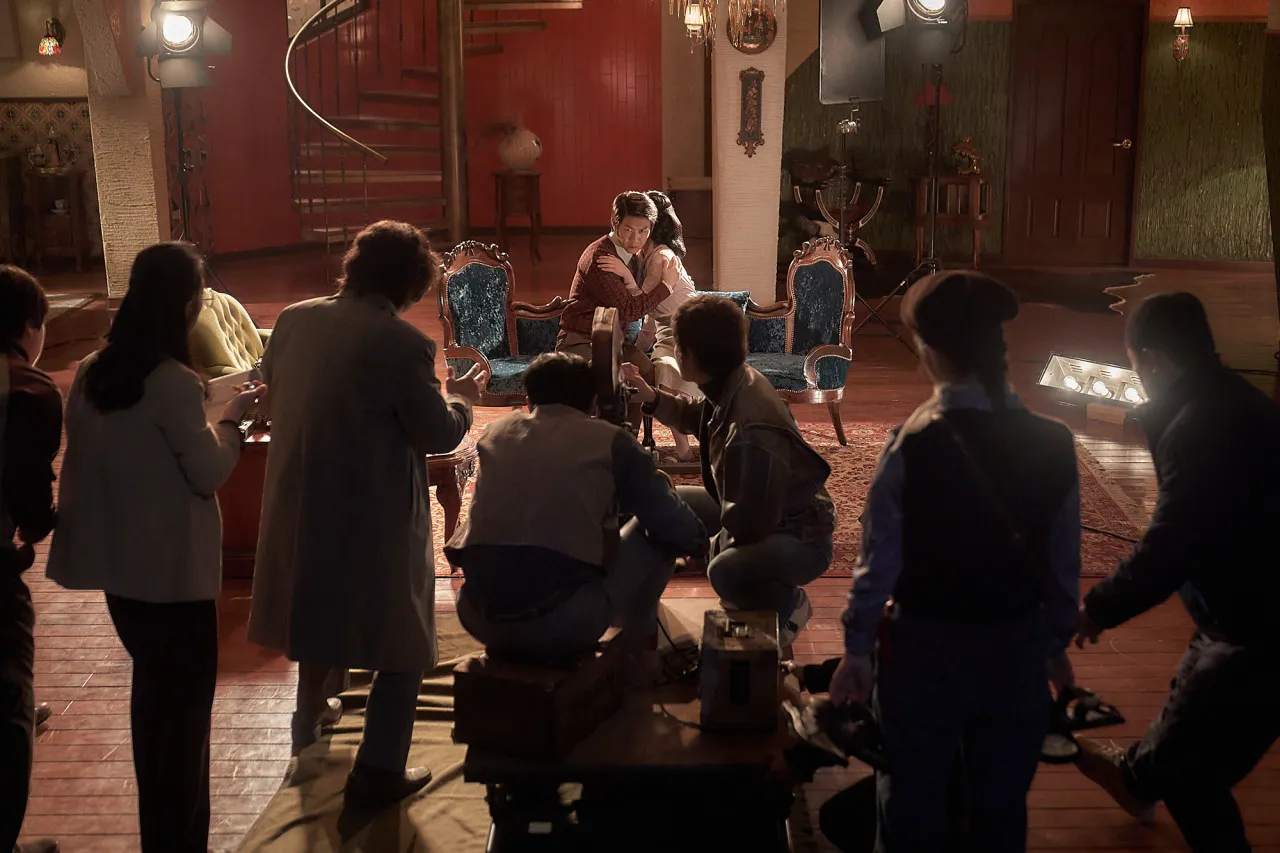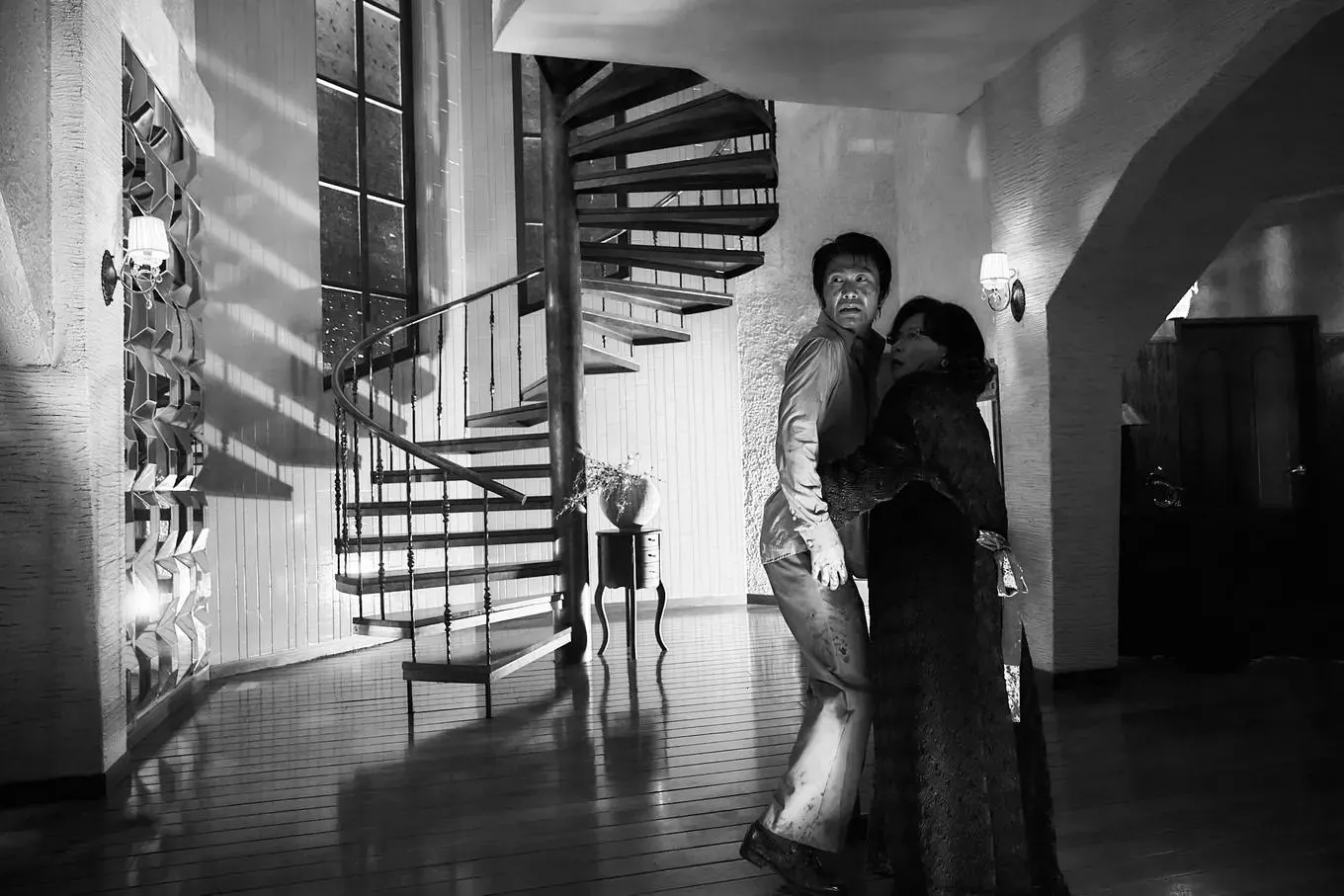The Web: A Dive into the Korean Film Industry of the 1970s
The early 1970s in South Korea were a period of artistic struggle under the weight of censorship and societal expectations. Director Kim Ki-yeol, portrayed by the versatile Song Kang-ho, finds himself haunted by the unfinished scenes of his latest film, “The Web.” He is convinced that a few days of reshoots, particularly of the final scene, could elevate his work from mediocrity to masterpiece.
However, his vision clashes with the pragmatic views of the studio director (Jang Young-nam), who believes the film is complete and that further changes might be detrimental. The ever-present censorship committee is unlikely to approve a revised script, and the lead actors (Oh Jung-se and Krystal Jung) are already committed to other projects.
Amidst this chaos, Kim finds an ally in the young producer Shin Mi-do (Jeon Yeo-bin). Together, they embark on a clandestine mission, locking the actors in the studio and even resorting to drugging a censorship official to proceed with the reshoots in secret.

Song Kang Ho as Kim in a still from “The Web”
Kim Jee-woon’s Reflection on Korean Cinema
“The Web” premiered in the non-competitive section of this year’s Cannes Film Festival. Director Kim Jee-woon, while perhaps overshadowed in recent years by Park Chan-wook and Bong Joon-ho, remains a significant figure in Korean cinema. His career spans both domestic and international projects, including the American action film “The Last Stand” starring Arnold Schwarzenegger, and the Apple TV+ sci-fi series “Dr. Brain.”
Kim’s diverse filmography includes the brutal thriller “I Saw the Devil,” the eccentric western “The Good, the Bad, the Weird,” the stylish noir “A Bittersweet Life,” and the historical drama “The Age of Shadows.” However, his most acclaimed works were primarily produced in the 2000s and early 2010s.
Kim Jee-woon has stated that the idea for “The Web” emerged during the pandemic, prompting him to reflect on the history of Korean cinema. While contemporary Korean films enjoy global success and recognition at prestigious festivals, the first wave of Korean cinema occurred in the 1960s, influencing many modern classics. However, these films only reached European and American audiences much later, partly due to the popularity of Park Chan-wook, Bong Joon-ho, and Kim Jee-woon.
Kim recalled that in the 1970s, film production declined sharply, and censorship flourished, making it increasingly difficult to create impactful works. He sought to understand the challenges faced by filmmakers of that era, which inspired the creation of the film’s protagonist.

Oh Jung-se as Kang Ho-se in a still from “The Web”
Ambition and Madness in Filmmaking
Kim Ki-yeol is portrayed as a struggling director living in the shadow of his deceased mentor, Shin (Jung Woo-sung). His only successful film was his debut, and rumors suggest he plagiarized the script from his teacher. Driven by a desire to prove his talent to the press and audience, Kim is consumed by ambition, bordering on obsession.
One of the central themes of the film is the fine line between ambition and madness in creative pursuits. While it seems unlikely that reshooting a few scenes could drastically change a film, Kim firmly believes in his vision and is willing to push his actors, deceive studio executives, and even risk lives to achieve his artistic goals.
A Glimpse into the Past
“The Web” offers a fascinating glimpse into the history of Korean cinema. It highlights the challenges faced by filmmakers in the post-war era, who had to navigate censorship, satisfy producers, and maintain their reputation among peers. Parallels can be drawn between Korean and Soviet cinema of the 1970s, both of which were subject to political and ethical restrictions.
Kim Jee-woon pays homage to his predecessors. The protagonist bears resemblance to director Kim Ki-young, and the film being reshot is reminiscent of “The Housemaid” (1960). One of the characters is named Madame Oh, a nod to the Japanese drama “Madame O” by Seiichi Fukada. “The Web” likely contains numerous other Easter eggs, but recognizing them all requires extensive knowledge of Asian cinema from half a century ago.

Still from “The Web”
A Chaotic Production
The director, played by Song Kang-ho, faces a multitude of problems. In addition to dealing with producers and censors, he discovers that his lead actors were once romantically involved, and their relationship has since soured. Kim Jee-woon explores several intriguing storylines, but each feels somewhat predictable and lacks sufficient dynamism.
To compensate for the lack of dramatic tension, the director interweaves the production process with scenes from the film being shot. The struggling director, having endured numerous challenges, hopes to create a masterpiece.
Korean cinema is known for its genre-bending and rapid shifts from thriller to comedy, from action to melodrama. “The Web” features numerous scenes from the film within the film. The audience witnesses a black comedy about filmmaking, while the characters are shooting an erotic psychological thriller. To differentiate between the two, Kim presents the main action in color and the reshoot scenes in monochrome. However, the genres do not blend seamlessly, and it can be difficult to follow the fragmented events of the thriller being created.
Kim Jee-woon demonstrates that he has not lost his directorial skills, but unfortunately, the artistic flourishes conceal a somewhat dull plot. The chaos on set is not quite mad enough to be truly captivating, and the problems faced by the onscreen director are familiar. While the author attempts to portray filmmaking as an unpredictable adventure, the anecdotes are only moderately interesting. “The Web” is not a film to be strongly criticized, but it also lacks the qualities to be highly praised.